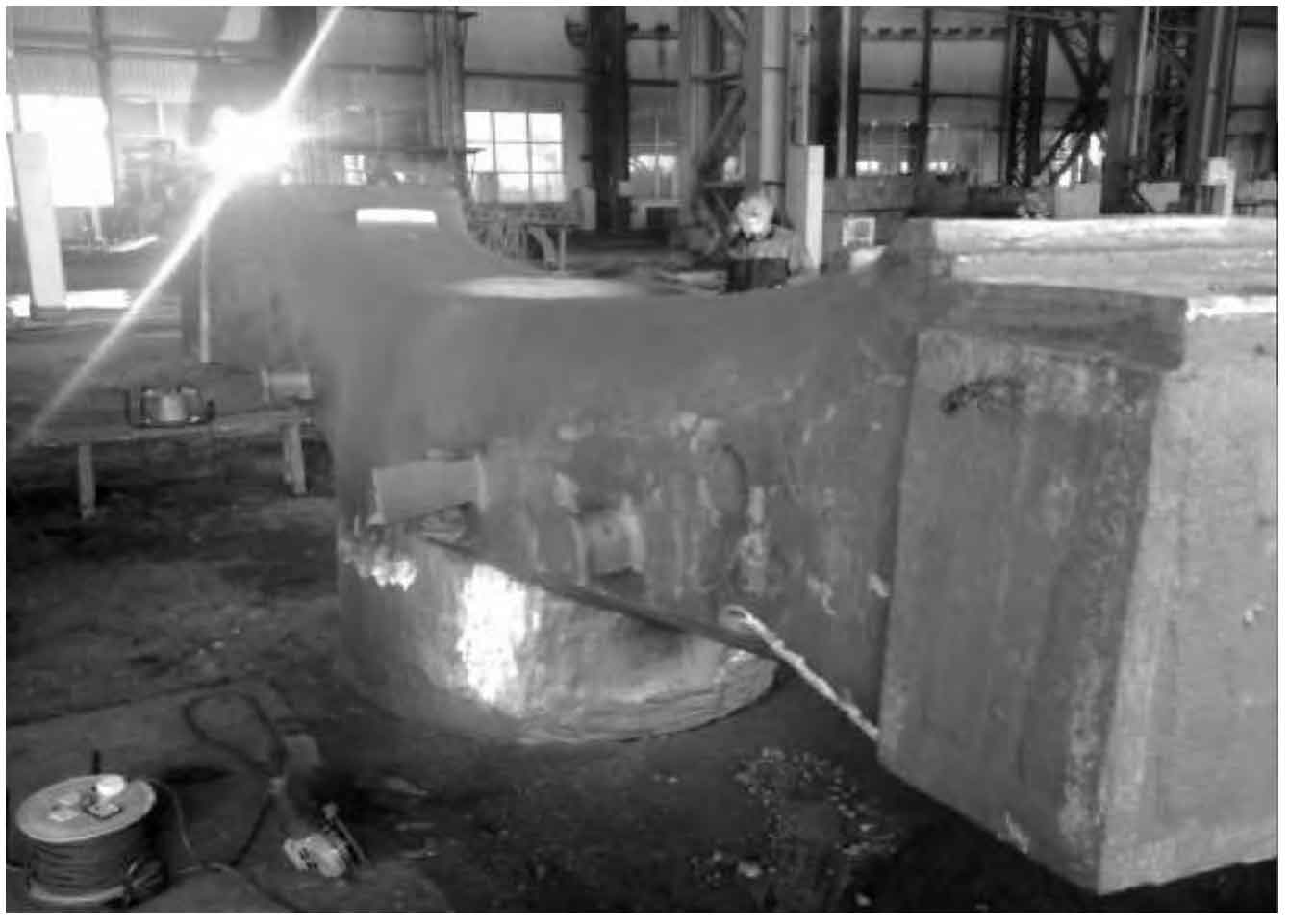The pouring test was carried out on the improved process of steel castings (using two heating risers for liquid metal feeding, adding cold iron chilling at the end of the steel castings away from the riser, and adding subsidies at the root of the riser). The flaw detection treatment shows that the steel castings cast by the improved process no longer have shrinkage cavity and porosity defects at point 4, and the steel castings meet the acceptance standard as a whole, as shown in the figure.
(1) In the area far away from the riser and the quench tail of steel castings in the original casting process, there is an area less than the critical value of niyama criterion. Therefore, in the actual production, it is found that the leaning out does not meet the requirements in this area.
(2) The original casting process is improved, that is, a subsidy which can increase the feeding distance of the riser is added at the bottom of the riser. Through simulation experiment and niyama criterion calculation, the positive temperature gradient from the end of steel casting to riser is realized, and there is no area less than the critical value of niyama criterion.
(3) The actual pouring experiment of the beam shows that the steel castings poured by the improved casting process have no shrinkage cavity and porosity defects, which is consistent with the predicted results.

